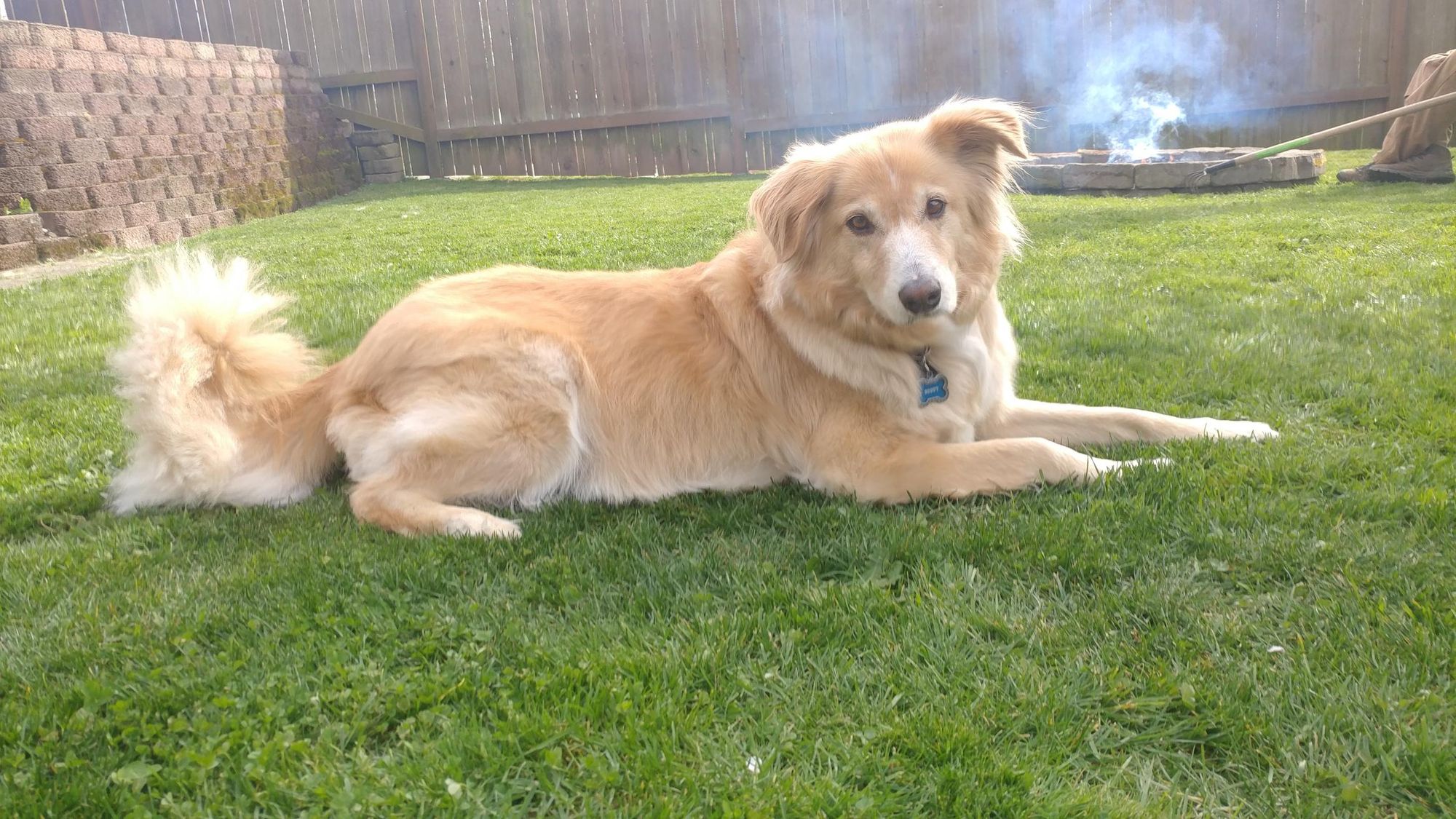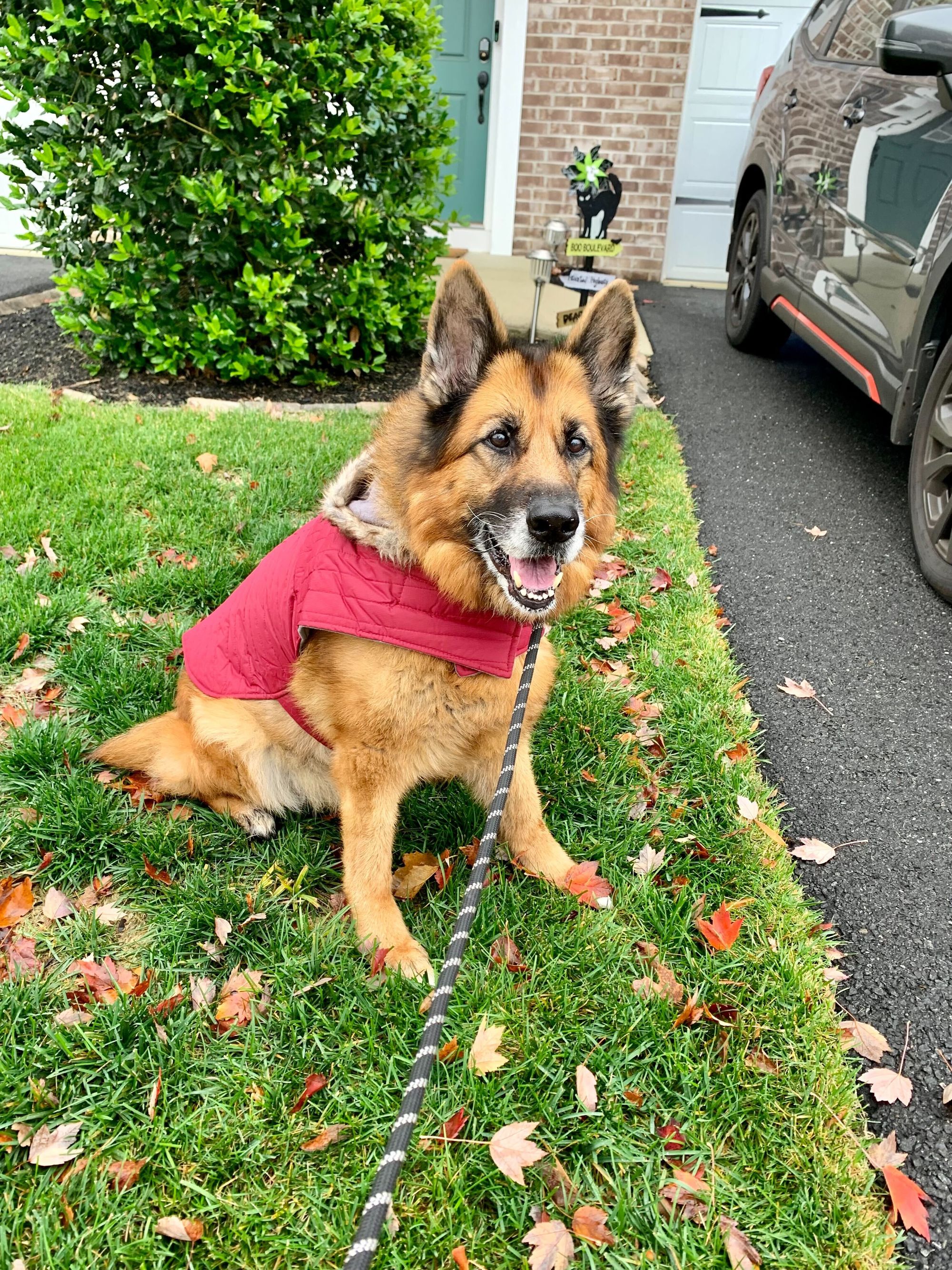Osteosarcoma Case Study: Jade
With a combination approach that included FidoCure® therapy, Jade is alive and well 2 years after her initial diagnosis of osteosarcoma.
History and Initial Therapy
Jade Joseph, a 10-year-old female spayed, Doberman Pinscher, developed an acute lameness of her left forelimb in February 2021. Radiographs showed a mixed osseous lesion of the left distal ulna. Cytology of the lesion was diagnostic for a sarcoma with osteosarcoma being the top differential based on the presence of osteoclasts.
Jade’s parents did not want to pursue amputation, so she received radiation therapy to help control her pain. This was followed by a course of 6 doses of Carboplatin. Jade’s family wanted to pursue additional targeted therapy, so they contacted FidoCure®.
FidoCure® Analysis
Jade was enrolled as a therapy only case in July 2021. Therapy recommendations were made based on other osteosarcoma cases we have sequenced as well as data available in both the human and veterinary literature. Mutations felt to have therapeutic implications for osteosarcoma include DMD, P53, PTEN, and SETD2.
DMD is a gene that encodes the protein dystrophin which primarily functions in the stability and structure of muscle cells/fibers. Mutations in this gene have been most commonly associated with Duchenne muscular dystrophy in humans. More recent research has identified a potential role for DMD as a tumor suppressor in human malignancies such as rhabdomyosarcoma. Interestingly, recurrent aberrations in the DMD gene have been identified in canine osteosarcoma. The majority were identified as structural variants including copy number loss and translocation while a small number of single nucleotide variants were also identified. The tyrosine kinase inhibitor, dasatinib, has been identified as a potential therapeutic agent in the setting of DMD mutant disease.
TP53 encodes a protein called tumor protein p53 which has become one of the most well published tumor suppressor genes in human and canine cancer. This protein helps to regulate cell growth and damaged cells by controlling signals for pausing the cell cycle and cell death. Phosphatase and tensin homolog (PTEN) is a tumor suppressor frequently altered in various human cancers, and alterations have been identified in canine malignancies. The normal function of PTEN is negative regulation of the AKT/PI3K/mTOR cellular growth pathway. Targeting this mutation using mTOR inhibitors has decreased its effect as a driver of canine cancer.
SETD2 is a gene that encodes a lysine methyltransferase which has been described for tumor suppressor properties in human cancer literature. Mutations in SETD2 contribute to epigenetic regulation and interact with or modify the activity of histone deacetylases (HDAC).
FidoCure® Treatment
DMD mutations, found in 50% of cases, are common in canine osteosarcoma. Based on this, it was decided to start Jade on Dasatinib at a 0.5 mg/kg every other day dose in July 2021. She had occasional nausea after starting this new therapy but was otherwise doing well. Her nausea was well controlled with Cerenia. Jade also received monthly Zoledronate infusions to help with pain control.
At her recheck in June 2022, her forelimb pain had worsened. There was no evidence of disease progression or metastasis on repeat imaging, so her pain was thought to be due to microfractures. In addition to her monthly Zoledronate infusions, she received Gabapentin, Tramadol, Tylenol, and Amantadine.
Jade’s left forelimb became more painful and swollen over several days ultimately requiring an amputation in early December 2022. Her local lymph nodes were removed at that time as well. Biopsy did not reveal any evidence of cancer recurrence, and the swelling was considered a delayed side effect of radiation therapy.
Her CT scan at the time of amputation showed a solitary nodule in her right cranial lung lobe. Follow-up PET scan confirmed that to be the only evidence of metastasis. Jade is scheduled to have the lung mass removed in early February. Jade continues to receive Dasatinib, but this may be adjusted pending FidoCure® genomic sequencing of the new lung nodule.
Conclusion
On a combined treatment plan that did not include amputation, Jade has done well for 2 years following her initial diagnosis of osteosarcoma. This is double the reported median survival time of 1 year for dogs historically treated with amputation and injectable chemotherapy.
Thoughts from Dr. Richard Joseph, a veterinary neurologist in New York, and one of Jade’s pet parents:
“...really pleased and love the philosophy of the safe drugs they can take for life…it is phenomenal.”


